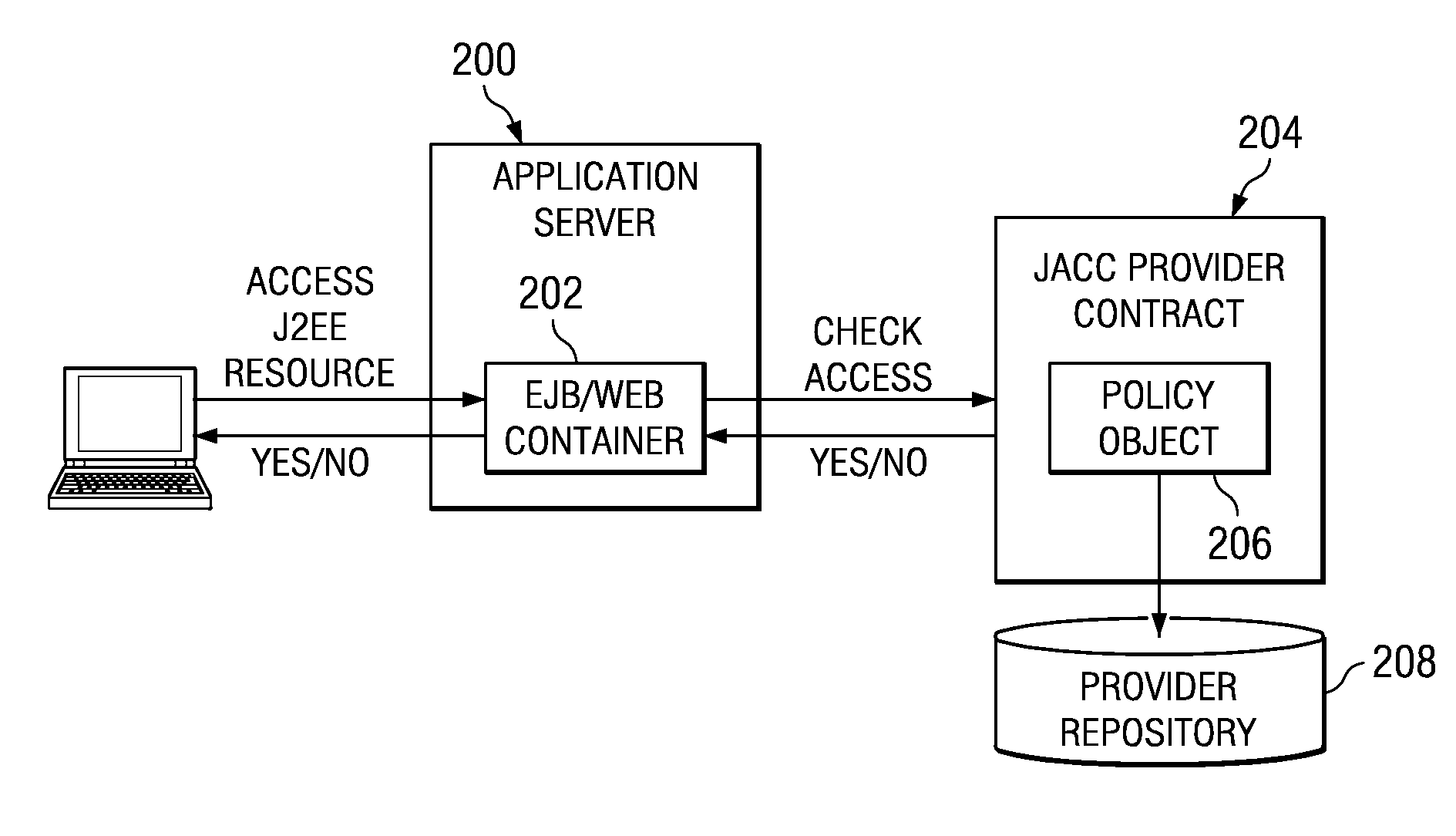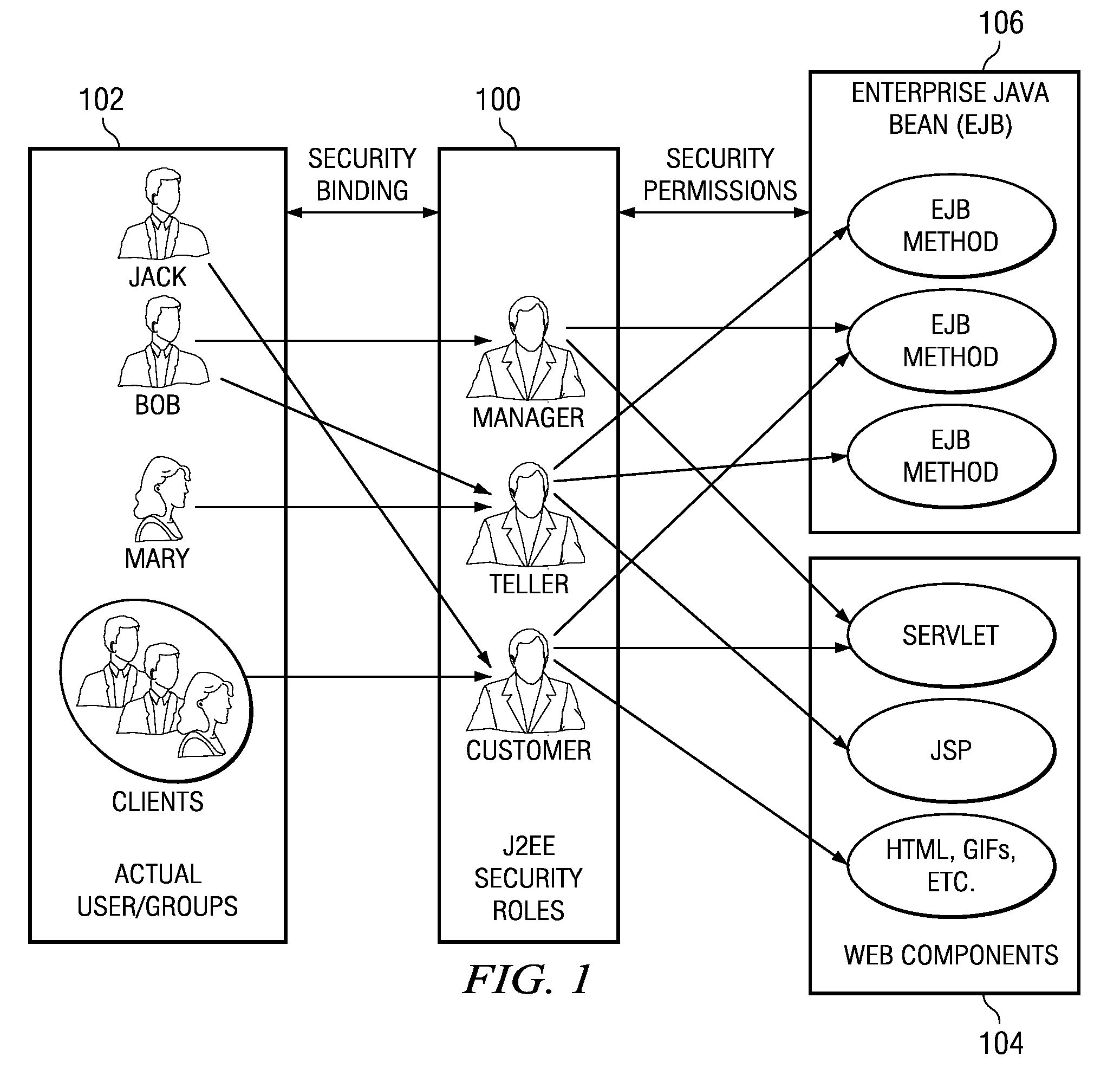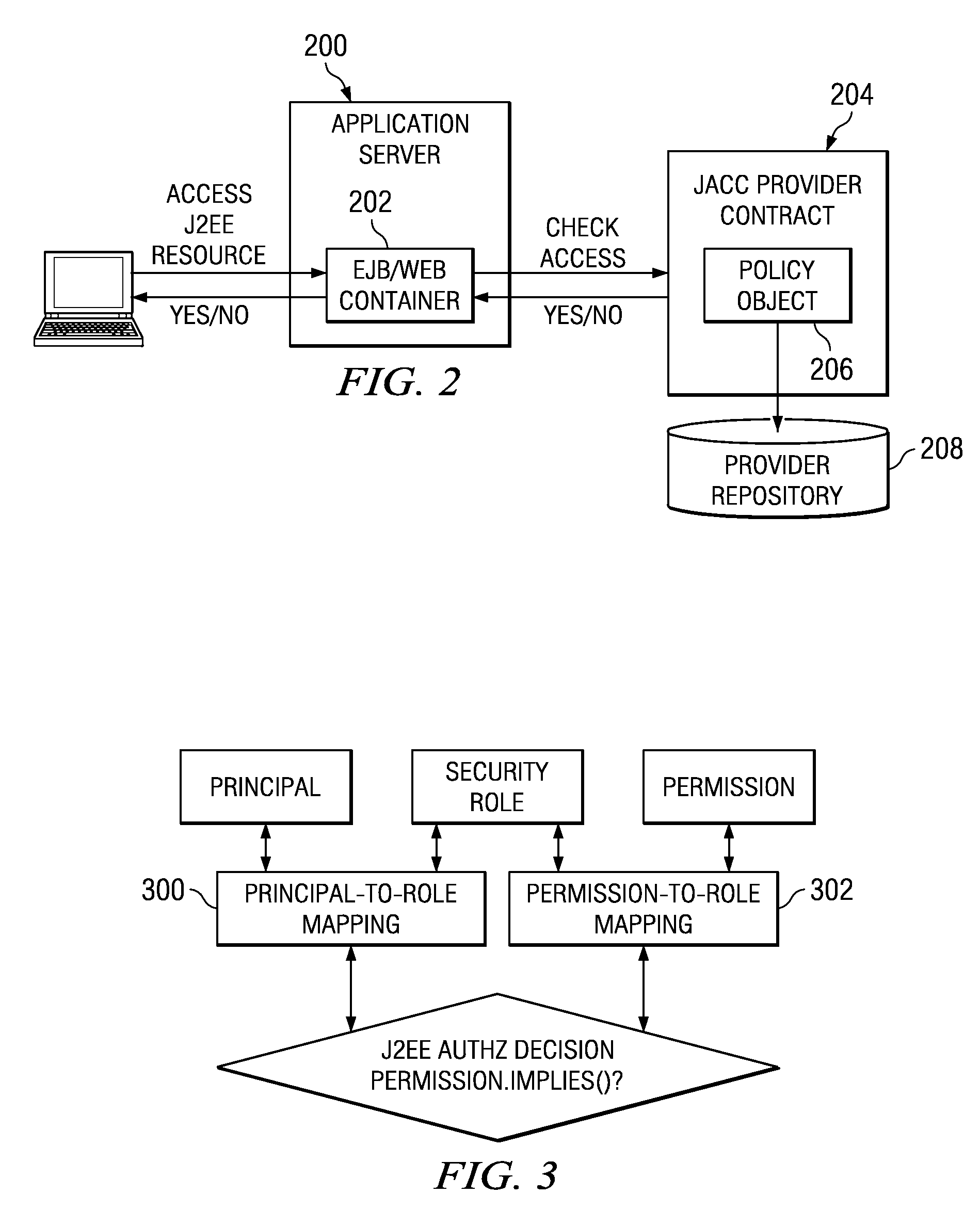Role-based authorization using conditional permissions
a permission object and conditional permission technology, applied in the field of conditional permissions for role-based authorization, can solve the problems of not being able to inject “instance data” into the j2ee permission object, the requirements for security software become more complex, and the real world computing environment becomes more complicated
- Summary
- Abstract
- Description
- Claims
- Application Information
AI Technical Summary
Benefits of technology
Problems solved by technology
Method used
Image
Examples
Embodiment Construction
[0032]FIG. 4 is a representative enterprise environment in which an end user (such as client browser 402) requests an enterprise service or resource. The enterprise typically comprises a front end proxy server 404, a Web server 406, an application server 408, and back end information systems 410. A plug-in 412 interfaces the Web server 406 to the application server 408, which has an associated trust association interceptor 414. As an example, the application server 408 is implemented in an IBM WebSphere application server platform, and the trust association interceptor 416 is provided by IBM Tivoli Access Manager (TAM). The enterprise is associated with a third party security provider 416. As used herein, a “provider” such as security provider 416 typically is a software component that contains implementations of a policy configuration, and policy decision classes as defined by the Java specification. As described above, the application server 408 supports a J2EE application compris...
PUM
 Login to View More
Login to View More Abstract
Description
Claims
Application Information
 Login to View More
Login to View More - R&D
- Intellectual Property
- Life Sciences
- Materials
- Tech Scout
- Unparalleled Data Quality
- Higher Quality Content
- 60% Fewer Hallucinations
Browse by: Latest US Patents, China's latest patents, Technical Efficacy Thesaurus, Application Domain, Technology Topic, Popular Technical Reports.
© 2025 PatSnap. All rights reserved.Legal|Privacy policy|Modern Slavery Act Transparency Statement|Sitemap|About US| Contact US: help@patsnap.com



